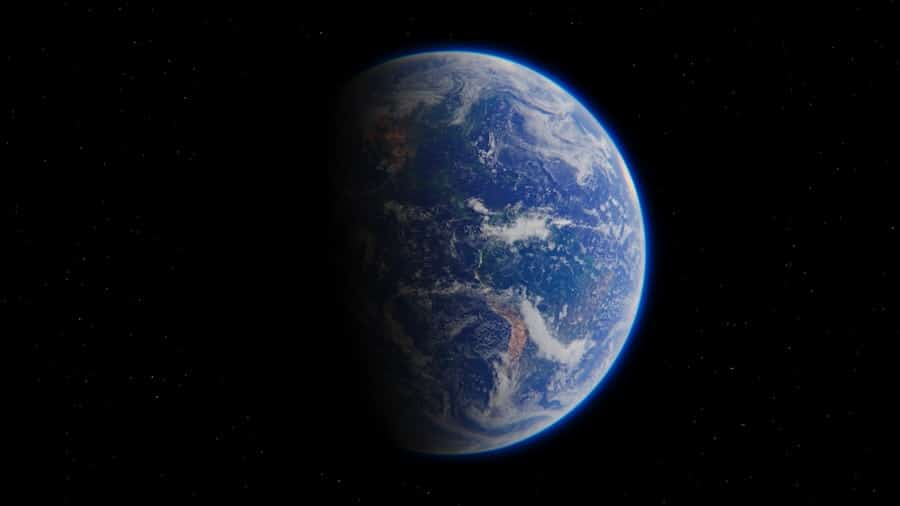The intersection of artificial intelligence (AI) and space weather prediction represents a burgeoning field that holds significant promise for enhancing our understanding of the complex interactions between solar activity and Earth’s magnetosphere. Space weather, which encompasses phenomena such as solar flares, coronal mass ejections (CMEs), and geomagnetic storms, can have profound effects on satellite operations, communication systems, and even power grids on Earth. As our reliance on technology continues to grow, the need for accurate and timely predictions of space weather events becomes increasingly critical.
AI, with its ability to analyze vast datasets and identify patterns, is emerging as a powerful tool in this domain.
Traditional methods of forecasting space weather often rely on numerical models that can be computationally intensive and time-consuming.
In contrast, AI algorithms can process large volumes of data from various sources, including satellite observations and ground-based measurements, to generate predictions more rapidly and with greater accuracy. This shift towards AI-driven methodologies is not only transforming how scientists approach space weather forecasting but also enhancing our ability to protect critical infrastructure from the potentially damaging effects of solar events.
Key Takeaways
- AI has the potential to revolutionize space weather prediction by improving accuracy and lead time for forecasting solar storms and their impact on Earth.
- Current challenges in space weather prediction include the complexity of solar activity, limited data availability, and the need for real-time monitoring and forecasting capabilities.
- AI can play a crucial role in improving space weather prediction by analyzing large volumes of data, identifying patterns, and making accurate forecasts.
- Advancements in AI technology, such as machine learning algorithms and neural networks, are enhancing the capabilities of space weather prediction models.
- Potential applications of AI in space weather prediction include early warning systems for geomagnetic storms, improved satellite operations, and better protection of critical infrastructure on Earth.
Current Challenges in Space Weather Prediction
Despite advancements in technology and modeling techniques, space weather prediction remains fraught with challenges. One of the primary difficulties lies in the inherent complexity of solar phenomena. The Sun’s behavior is influenced by a multitude of factors, including magnetic fields, plasma dynamics, and solar cycles, making it difficult to create models that can accurately predict events like CMEs or solar flares.
These phenomena can occur suddenly and with little warning, complicating efforts to provide timely alerts to those who may be affected. Another significant challenge is the integration of data from diverse sources. Space weather data is collected from a variety of instruments, including satellites like the Solar Dynamics Observatory (SDO) and ground-based observatories.
Each source may have its own limitations in terms of resolution, coverage, and reliability. The task of synthesizing this disparate data into a coherent picture of current and future space weather conditions is daunting. Moreover, the sheer volume of data generated by these instruments can overwhelm traditional analytical methods, leading to delays in prediction and response times.
The Role of AI in Improving Space Weather Prediction

AI has the potential to revolutionize space weather prediction by providing tools that can analyze complex datasets more efficiently than traditional methods. Machine learning algorithms, a subset of AI, are particularly well-suited for this task as they can learn from historical data to identify patterns and correlations that may not be immediately apparent to human analysts. For instance, researchers have begun employing neural networks to predict solar flares based on historical flare data and associated solar conditions.
These models can be trained on vast datasets, allowing them to improve their predictive capabilities over time. Furthermore, AI can enhance real-time monitoring of space weather conditions. By utilizing techniques such as deep learning, AI systems can process incoming data streams from satellites and ground-based sensors almost instantaneously.
This capability enables scientists to issue alerts for impending space weather events with unprecedented speed and accuracy. For example, AI-driven systems can analyze changes in solar radiation levels or shifts in magnetic fields to provide early warnings for geomagnetic storms that could disrupt satellite communications or power grids.
Advancements in AI Technology for Space Weather Prediction
Recent advancements in AI technology have significantly bolstered its application in space weather prediction. One notable development is the use of convolutional neural networks (CNNs), which excel at image recognition tasks. These networks can analyze images captured by solar observatories to detect features such as sunspots or active regions on the Sun’s surface that are precursors to solar flares.
By automating this analysis, researchers can quickly identify areas of interest that warrant further investigation. Additionally, advancements in natural language processing (NLP) have enabled AI systems to sift through vast amounts of scientific literature and reports related to space weather. This capability allows researchers to stay abreast of the latest findings and methodologies without manually reviewing countless publications.
By integrating NLP with machine learning models, scientists can develop more comprehensive predictive frameworks that incorporate both observational data and theoretical insights.
Potential Applications of AI in Space Weather Prediction
The potential applications of AI in space weather prediction extend beyond mere forecasting; they encompass a wide range of practical uses that can enhance our preparedness for solar events. One significant application is in the realm of satellite operations. AI algorithms can be employed to optimize satellite positioning and maneuvering during periods of heightened solar activity, thereby minimizing the risk of damage from radiation exposure or electromagnetic interference.
Moreover, AI can play a crucial role in developing decision support systems for power grid operators. By providing real-time predictions of geomagnetic storms and their potential impacts on electrical infrastructure, AI-driven tools can help utilities implement proactive measures to safeguard against outages or equipment failures. This capability is particularly vital given the increasing frequency and intensity of solar storms associated with the 11-year solar cycle.
Ethical and Privacy Considerations in AI-Driven Space Weather Prediction

Bias in Machine Learning Algorithms
One primary concern is the potential for bias in machine learning algorithms. If the training data used to develop these models is not representative or contains inherent biases, the predictions generated may be skewed or inaccurate.
Importance of Diverse Datasets
This issue underscores the importance of using diverse datasets that encompass a wide range of solar activity scenarios. This helps to mitigate the risk of bias and ensures that the predictions generated are accurate and reliable.
Ensuring that data collection practices adhere to ethical standards and privacy regulations is essential to maintain public trust in AI-driven systems.
Collaboration and Partnerships in Advancing AI for Space Weather Prediction
The advancement of AI technologies for space weather prediction necessitates collaboration among various stakeholders, including government agencies, academic institutions, and private sector organizations. Partnerships between these entities can facilitate knowledge sharing and resource pooling, ultimately leading to more robust predictive models. For instance, NASA’s partnership with universities has resulted in innovative research projects that leverage AI for analyzing solar data.
International collaboration is also crucial given the global nature of space weather phenomena. Organizations such as the World Meteorological Organization (WMO) are working towards establishing frameworks for sharing data and best practices among countries. By fostering a collaborative environment, researchers can develop more comprehensive models that account for regional variations in space weather impacts.
The Future of AI in Space Weather Prediction: Opportunities and Implications
Looking ahead, the future of AI in space weather prediction is filled with opportunities that could significantly enhance our ability to understand and respond to solar events. As machine learning techniques continue to evolve, we can expect even greater accuracy in predictions and a deeper understanding of the underlying mechanisms driving space weather phenomena. The integration of AI with other emerging technologies, such as quantum computing, may further accelerate advancements in this field.
However, these opportunities also come with implications that must be carefully considered. As reliance on AI-driven systems increases, there will be a growing need for transparency in how predictions are generated and communicated. Stakeholders must ensure that decision-makers understand the limitations and uncertainties associated with AI predictions to avoid over-reliance on automated systems.
In conclusion, while challenges remain in the realm of space weather prediction, the integration of AI technologies offers a promising path forward. By harnessing the power of machine learning and fostering collaboration among diverse stakeholders, we can enhance our predictive capabilities and better prepare for the impacts of solar activity on our increasingly technology-dependent society.
One interesting article related to The Future of AI in Space Weather Prediction is “The Best Tablets for Students in 2023” which discusses the latest and most suitable tablets for students to enhance their learning experience. To read more about this topic, check out the article here.
FAQs
What is space weather prediction?
Space weather prediction involves forecasting the conditions in space that can affect Earth and its technological systems, such as satellites, communication networks, and power grids. These conditions are influenced by solar activity, including solar flares and coronal mass ejections.
How is AI currently being used in space weather prediction?
AI is being used to analyze large volumes of space weather data and to develop predictive models. Machine learning algorithms are being employed to identify patterns and correlations in the data, which can improve the accuracy of space weather forecasts.
What are the potential benefits of using AI in space weather prediction?
Using AI in space weather prediction can lead to more accurate and timely forecasts, which can help protect critical infrastructure and assets from the effects of space weather events. This can ultimately reduce the economic impact of space weather on various industries.
What are the challenges of using AI in space weather prediction?
Challenges include the need for large amounts of high-quality data for training AI models, as well as the complexity of space weather phenomena. Additionally, ensuring the reliability and interpretability of AI-generated forecasts is crucial for their practical use.
What are some future developments in AI for space weather prediction?
Future developments may involve the integration of AI with physical models of space weather, as well as the use of advanced AI techniques such as deep learning. Collaborations between space agencies, research institutions, and AI experts are likely to drive further advancements in this field.

